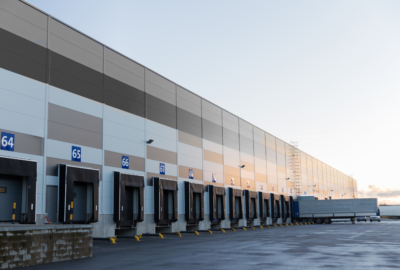Marketing
It’s time to embrace your digital transformation
It should be no surprise to anyone that big tech companies are set on disrupting the fragmented trucking sector. Ordering something may happen with the click of a button, but the pick-pack-and-truck process is another story. It takes time. It’s labor- intensive. There’s paperwork involved. According to a recent PwC study, only 28% of the transportation industry can claim a high rate of successful digital implementation. That number is overinflated. You know it, I know it, and so does Silicon Valley. As a fleet owner or manager, it’s easy to look at blockchain, artificial intelligence, automation, and other game-changing technology and feel like you want to disconnect completely. In fact, your company’s digital transformation (for the newbies) should be a series of incremental steps and investments that, one day, will allow you to confidently place your order for a fleet of drones and run the whole operation from the seat of a golf cart. Here are some things to keep in mind as you manage the digital transformation at your business.
Cultural indifference
According to that PwC study, nearly half of transportation businesses say company culture and the cost to implement digital technology are their biggest deterrents to change.
Hogwash.
Think back to when ELDs were first legislated in the U.S. Drivers and dispatchers worried about “big brother”; some threatened to quit. The cost of the hardware, installation, and training seemed staggering.
But for years we knew that ELDs were going to be rammed down our throats regardless.
So what happened? Many carriers implemented ELDs well in advance of the dead- line and used the time to work out the bugs with their employees, customers, and ELD providers. Instead of being hindered by cost or culture, the technology eliminated an inefficient paper process and helped fleets show drivers that they value their time.
Core processes
Trucking is affected by so many factors that we can’t control (weather, traffic, etc.). When we do have control we have to be efficient. Automating core functions or repetitive tasks like order entry, load planning, and customer service can improve productivity and strengthen margins. It can also make it easier to attract employees, especially millennials, who want to do more than push paper all day.
1-10-100 rule
The 1-10-100 rule—a pillar at FedEx—is something I embraced when I owned trucks. Simply put, the rule states that a problem caught at the source costs $1 to fix. If it creeps into another department, the cost jumps to $10. If it affects a customer, it’s $100. Whenever you evaluate tech products or services, ask one simple question: How will this help us eliminate mis- takes? The impact on ROI is potentially huge.
Customer experience
I’m amazed at the way carriers can be so vague about their delivery times. “Three days from when we pick up your shipment” doesn’t cut it with digitally wired customers who value accurate, precise, instantaneous information. According to a Walker Consulting study, customer experience is fast becoming more important as a brand differentiator than price and product. Some of the industry’s leading carriers have done an incredible job to create seamless, memorable, online experiences. Those with antiquated customer interfaces and systems that are slow to give a rate quote, track a shipment, or solve a billing question will have trouble staying relevant. Sorry, gotta run. The shirt I bought on Amazon last night arrived as I was booking a round of golf on Underpar while checking.



Leave a reply
You must be logged in to post a comment.